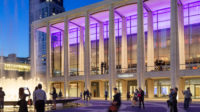Arquitecturia
After winning a number of design competitions, a young firm develops a body of work that responds to its rugged but rich context.




















Barcelona, Spain
A cluster of windblown branches sprouts from a tree stump in front of a museum in Ascó, Spain. The tree is sufficiently battered that I wonder why architects Olga Felip and Josep Camps kept it. “Our landscape doesn’t have a lot of character. But it does have lots of history,” said Felip. That little tree looks like it has seen plenty.
Felip, 30, and Camps, 36, are the two partners of Arquitecturia, a nine-person firm in Barcelona, Spain, which won a competition to design the Balaguer Law Court just five months after it started in 2006. The partners, who are married to each other, look for cues in the landscape or locale to imbue ordinary building programs with a haunting power. Both hail from Catalonia, a semi-autonomous region within Spain that retains its own language and culture. Asked if their Catalan status gives them a unique outlook on architecture, Felip answers, “Absolutely. We studied at the Barcelona School of Architecture and had very strong leaders in Carlos Ferrater and Elias Torres. They have what I consider a Catalan way of doing architecture—in how they consider the site, understanding all of its historic layers and trying to feel the context.”
Their ascetic minimalism seems ubiquitous among young Spanish firms, in Catalonia and elsewhere. Their powerful, geometric forms respond in a dignified way to the centuries-old towns they’ve worked in. When working with historic structures or contexts, she says, “We try to bring a new view, but emphasize the most important original elements to reveal their power.” History figured deeply in the design of a tiny plaza that wraps the outside of a Gothic church’s apse in Tortos, following the site’s original contours and evoking the town’s ancient roots. Similarly, the partners stripped down a public market building in Tortosa to convert it to a cultural center. The challenge, says Felip, is to figure out what to keep and what to remove.
The museum in Ascó, which acts as a visitor center for a nuclear power plant, reveals another key source of expression: The way site characteristics can—and often should—distort an ideal resolution of the building program. For this project, the partners started with a neatly gridded plan, then cut out a pair of sweeping curves to open distant views rather than focus on a characterless foreground.
Architecturia’s simple geometric forms and limited range of materials work well for tight public-building budgets. In a pair of future projects (for a school and a public library), overlapping and colliding forms create broad overhangs and intimate courtyards, strategies that suit places where sun is relentless and shade is welcome. Felip and Camps bring a brooding yet compelling monumentality even to small projects in small towns, intensifying the effect with tough materials like steel fins and concrete and bold contrasts of color and texture. The two partners’ accomplishments so far suggest that they will succeed in scaling up their approach as they mature.
Arquitecturia
LOCATION: Barcelona
FOUNDED: 2006
DESIGN STAFF: 9
PRINCIPALS: Josep Camps and Olga Felip Ordis
EDUCATION: Camps – Universitat Politècnica de Catalunya, Diploma of Advanced Studies, 2004, and B.Arch., 2000. Felip – Universitat Politècnica de Catalunya, Diploma of Advanced Studies, 2009, and B.Arch., 2005
WORK HISTORY: Hurme – Cohlmeyer Architects Limited, 2002–07; Office of Architecture, City of Helsinki, 2000. Radulovic – Cohlmeyer Architects Limited, 1996–2007
KEY COMPLETED PROJECTS: Visitor Center and Museum of Energy, Ascó, 2011; Cultural Center, Tortosa, 2010; Apse Square, Tortosa, 2009
KEY CURRENT PROJECTS: Health Center, Aldea, 2011; House, Caldes de Malavella, 2012; Law Court, Balaguer, 2012, Peace Center, Ascó, 2012; Public Library, Caldes de Malavella, 2013
WEB SITE: WWW.ARQUITECTURIA.NET













